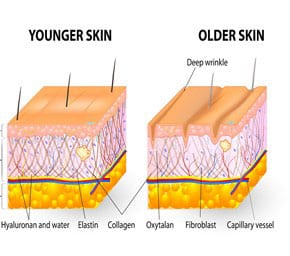SKIN LAXITY AFTER WEIGHT LOSS
– POST BARIATRIC SURGERY –Bariatric surgery or massive weight loss results in a variety of changes that most patients find disturbing. For some, a near normal appearance may be the result, but more often, excess skin and tissue hangs allover the body.
As we gain weight, the skin is all too accommodating in growing and stretching in order to sustain the body’s larger size. With cycles of weight gain and loss, expansion of the soft tissues of the body can adversely affect the skin’s dermal elasticity as well as the underlying connective tissue stability. It is this connective tissue mesh that is responsible for holding the skin tightly against the underlying structures. This results in stretch marks and the skin’s inability to contract with weight loss.







After the weight loss, many patients experience significant changes in the form, shape, and contour of their bodies, namely their arms, upper chest, breasts, back, buttocks, abdomen, thighs, and calves. These changes are vertical excesses and/or horizontal excesses (circumferential).
Many of these changes follow a predictable course. The arms show mild, moderate, or severe overall laxity that is best appreciated over the under surface of the arm. This extends from the elbow to the upper back through a hanging and hollowed armpit.
The breasts undergo deflation and flattening as well as marked sagging. The inframammary crease under each breast is pulled down by the weight of the hanging abdominal tissue. This pull deforms the shape and form of the inframammary crease resulting in a semi-linear inframammary crease rather than a semi-circular crease. Loosening of the inframammary crease also result in shifting of the whole breast unit on the chest region. The breasts are typically lower on the chest by about 1 inch or so.
Horizontal upper chest laxity results in excess tissue bulge under the armpit which gathers over a bra and under the arms. Vertical chest tissue and upper back tissue laxity result in hanging folds of skin that spans from the breast area towards the back, hanging over the outer chest.
Abdominal laxity presents as a hanging pannus that often extends over the pubic area. The abdominal laxity and excess spans the whole abdomen, meaning that there is excess upper and lower abdominal skin and tissue as well as excess waist skin and tissue. Many patients lack waist concavity. The groin region (mons) is lax and sagging, and in some patients still full.
The lower back tissue forms a roll that extends from the abdominal pannus over the waist regions and obscures the upper buttocks. This roll, referred to as the hip roll, often represents excess skin and fat and is often the source of our fat pads (known as flaps) for buttock augmentation with your own tissue. The buttocks are deflated, loose, and sagging.
The thigh tissues become loose and sag vertically in 100% of patients at the front, back, inner, and outer surfaces. Folds of loose thigh tissue can develop on both the inner and/or outer surfaces. In addition, 40 % of patients also develop thigh laxity in a horizontal dimension which results in widening of the thighs. That means the thighs not only appear loose in a vertical dimension but also are wider than desired.
When it comes to the legs, many patients are fine, few have excess fat and rarely some patients have excess fat and skin of their calf region.
The weight loss patients probably embody the concept of individuality more than any other group of surgical patients. Dr. Agha’s aim is a customized correction of the loss of shape and form. Thus, a thorough understanding of patient’s individual deformities and their desires is a must.
With immense understanding of the anatomical changes and innumerable experience in plastic surgery after weight loss, Dr. Agha attends to each patient’s needs by developing a custom plan for each individual. In planning a customized approach, Dr. Agha examines each region of your body for:
- Skin / tissue excess and laxity vertically
- Skin / tissue excess and laxity horizontally (circumferentiallY)
- Amount of excess fat under the skin
- Loss of curves and shape due to the excess fat and skin
What Determines The Amount of Loose Skin
The nature and degree of the changes are determined by multiple factors such as:
- Patient’s gender: Typically female patients have better skin quality than men due to female hormones.
- Age: Younger patients have more collagen and connective tissues within their skin. Thus their skin is able to contract better than older patients
- Pre-bariatric weight: The higher the weight, the more damage is done to the skin dermis and connective tissue layer.
- Actual weight loss: Obviously with more weight loss, there is more skin deflation and more skin that needs to contract.
- Genetic predisposition of the patient: Typically the darker color skin has more dermis within their skin and have better skin contraction after weight loss surgery.
- Cycles of weight gain and loss: Those patients who have gained and lost weight many times, have a higher percentage of damage to their skin dermis and collagen layers.
